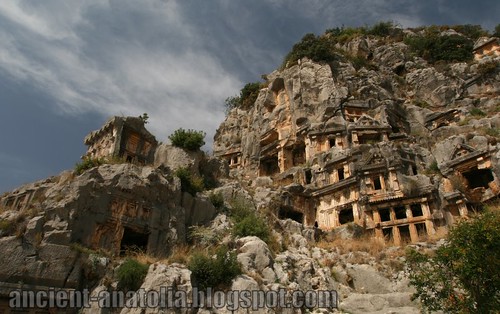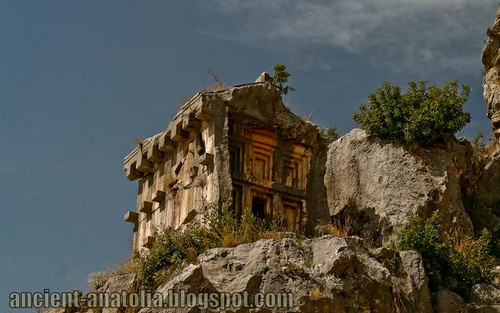
Myra, originally uploaded by voyageAnatolia.blogspot.com.
Myra is an ancient town in Lycia, where the small town of Kale (Demre) is situated today in Antalya Province of Turkey. According to Strabo Myra was one of the largest towns of the Lycian alliance (168 BC - AD 43). Saint Nicholas of Myra lived here. We know him today as Santa Claus.
There are two necropoli of Lycian rock-cut tombs in the form of temple-fronts carved into the vertical faces of cliffs at Myra: the river-necropolis and the ocean-necropolis. The ocean necropolis is just northwest of the theater. The best known tomb in the river-necropolis (located 1.5 km up the Demre Cayi from the theater) is the "Lion's tomb,"also called the "Painted Tomb." When the traveller Charles Fellows saw the tombs in 1840 he found them still colorfully painted red, yellow and blue.
